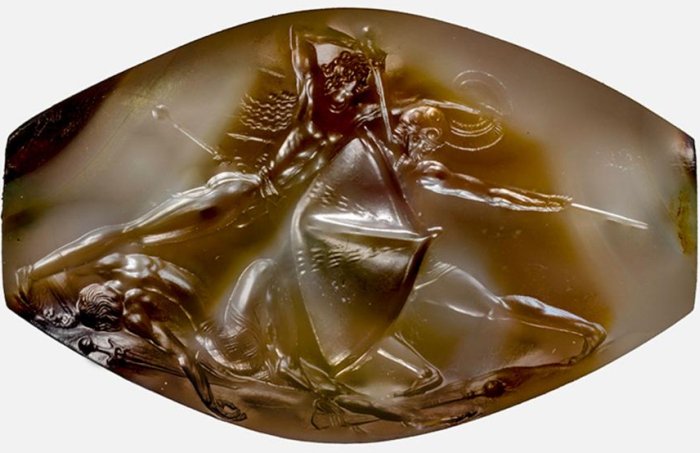In 2015 researchers from the University of Cincinnati uncovered a Bronze Age tomb in Pylos, in southwest Greece. It belonged to the so-called ‘Griffin Warrior’, a wealthy Mycenaean man, and dates back 3,500 years. Inside archaeologists uncovered a trove of treasure including precious jewels, armor and weapons, and many vessels made from precious metals. One of the most exciting discoveries, however, came in the form of a seemingly insignificant agate stone. It was covered in limestone initially, and it took a year of careful restoration to reveal its true form.
What lay beneath the limestone is a discovery so astounding that it is set to rewrite art history. As the intricate details of the stone’s design began to emerge, the researchers were astonished to discover that they had unearthed a masterpiece. The agate stone was revealed to be a seal, used for stamping an image onto clay or wax. The seal, named the ‘Pylos Combat Agate’, depicts a fierce hand-to-hand battle between tho warriors, with a third one already crumpled on the ground. The scene was meticulously carved on a 3.6-centimetre piece of hard stone, and some of the details are only half a millimeter in size.







